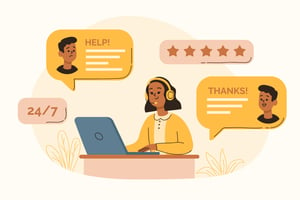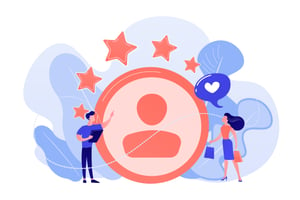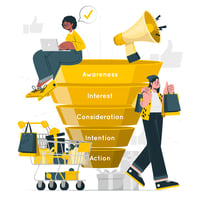The right funnel is crucial for a profitable social media marketing strategy. From the webhook to...
Custing: The importance of marketing messaging in customer service.
Marketing messaging plays a crucial role in customer service because it helps to establish the brand's voice and personality, and it sets the tone for all customer interactions. It is the foundation upon which a company's customer service strategy is built, and it should be carefully crafted to reflect the values and mission of the organization.
Effective marketing messaging helps to differentiate a company from its competitors, and it can be a powerful tool for building customer loyalty. By consistently using the same language and tone in all customer interactions, a company can create a cohesive and consistent customer experience.

There are several key elements to consider when developing marketing messaging for customer service.
- Clarity: Marketing messaging should be clear and concise, and it should be easy for customers to understand. Avoid using industry jargon or technical language that may be confusing to the average customer.
- Empathy: Marketing messaging should show empathy and understanding towards the customer's needs and concerns. This can help to build trust and establish a strong connection with the customer.
- Personality: Marketing messaging should reflect the personality and values of the brand. This helps to create a sense of authenticity and can make the customer feel more connected to the company.
- Call to action: Marketing messaging should include a clear call to action, such as encouraging the customer to visit the company's website or follow them on social media.

Why do you need to align your marketing and customer service teams?
The first reason that comes to head is profit and the reduction of cost. To be able to understand this you need to have a clear vision between client retention and client acquisition.
Client retention refers to the process of keeping existing customers engaged and satisfied with your business, while client acquisition refers to the process of attracting new customers to your business. Both are important for the growth and success of a company, but they require different strategies and resources.
A study by the Harvard Business Review found that it can cost up to 25 times more to acquire a new customer than it does to retain an existing one. This highlights the importance of not only attracting new customers, but also keeping the ones you already have.
As the famous business leader, Henry Ford, once said, "The only thing worse than training your employees and having them leave is not training them and having them stay." The same can be applied to customers - investing in retention can pay off in the long run.
Source: Harvard Business Review, "The Economics of Customer Service", https://hbr.org/2003/03/the-economics-of-customer-service
One important factor to consider when comparing the cost of client retention and new client acquisition is the lifetime value of a customer. The lifetime value of a customer is the total revenue a business can expect to earn from a customer over the course of their relationship. The lifetime value of a retained customer is typically higher than that of a new customer, as retained customers are more likely to purchase additional products or services and to refer others to the company.

Digital marketing is a crucial aspect of both client retention and new client acquisition. While the cost of retaining existing clients is typically lower than acquiring new ones, the lifetime value of a retained customer is usually higher. As a result, businesses should consider both client retention and new client acquisition in their digital marketing strategies to maximize their return on investment.
It's important to remember that the cost of retaining and acquiring clients will vary greatly depending on the industry, competition and target audience. For example, a B2B business may have a higher cost of acquisition than a B2C business, due to the complexity and longer sales cycles. Additionally, the cost of acquisition and retention may vary depending on the size of the business and the budget allocated for marketing.
Having this in mind why won't your marketing team help and design all messaging needed for your customer service?
I like to call this "Custing" (customer marketing) the alignment of customer service and marketing teams helping the whole company be more interconnected and aware of each other missions resulting in an overall higher performance.
In addition to these core company elements, there are several best practices to keep in mind when developing your marketing messaging for customer service.
1- Use a consistent tone: It is important to use a consistent tone in all customer interactions, whether they are in person, over the phone, or online. This helps to create a cohesive customer experience and reinforces the brand's personality.
2- Keep it simple: Marketing messaging should be easy to understand and should not require the customer to make a lot of effort to decipher it. Use positive language: Marketing messaging should be positive and upbeat, and it should avoid using negative words or phrases.
3- Personalize the message: Where possible, try to personalize the marketing message to the individual customer. This can help to make the customer feel more valued and can increase the chances of them becoming a loyal customer.
4- Test and refine: It is important to regularly test and refine marketing messaging to ensure it is effective. This can be done through A/B testing or by collecting feedback from customers.
In conclusion, marketing messaging is an essential element of customer service and can have a significant impact on the customer experience. By developing clear, empathetic, and personalised messaging that reflects the brand's personality and values, companies can build trust and establish a strong connection with their customers.

.png?width=50&name=profile-pic%20(8).png)
.jpg?width=300&height=150&name=Project%201%20(1).jpg)

